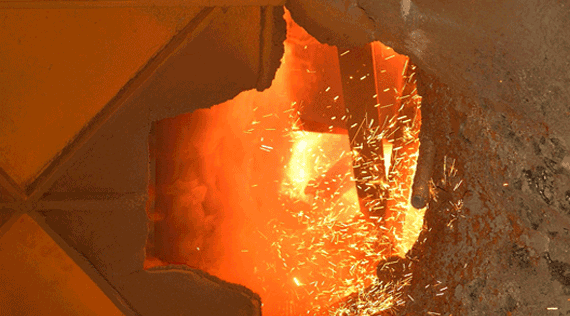
LAUNCESTON, Australia (Reuters) -If China wants to temper the red-hot iron ore and steel sectors it’s likely going to have to do more than just talk and tinker around the margins.
A move earlier this week to raise trading limits and margin requirements for some iron ore contracts and reinstate fees on steel futures appeared to have no initial impact, as both contracts rallied to fresh record highs.
The Dalian Commodity Exchange (DCE) raised trading limits and margin requirements for iron ore contracts or delivery in June, September, October and December, as well as for January-April 2022 from the May 11 trading day.
Separately, the Shanghai Futures Exchange (ShFE) said it would set fees for closing positions on the most active contracts for its steel rebar and hot-rolled steel coil futures, for delivery in October, at 0.01% of the total transaction value, starting from the evening session on May 11, reinstated fees that had previously been waived.
If the aim was to cool the market’s enthusiasm for the runaway rally in iron ore and steel this year, then it didn’t work, with DCE iron ore rallying to finish at a new closing high of 1,337 yuan ($207) a tonne on Wednesday.
Benchmark ShFE steel rebar futures also surged to a fresh closing high of 6,171 yuan a tonne, and they have now just more than doubled since the low of 2020, hit in early February as China was locking down much of its economy to combat the spread of the coronavirus outbreak.
Spot iron ore for delivery to north China, as assessed by commodity price reporting agency Argus, also climbed to a new all-time high on Wednesday, ending at $235.55 a tonne.
It has surged 51% in the past three weeks and is now up almost 200% from its 2020 low of $79.60 a tonne, reached on March 23 of that year.
The problem for the authorities in Beijing in their desire to take some of the heat out of the iron ore and steel markets is that they are having to balance contradictory aims and policies, some of their own making.
It’s difficult to reconcile an infrastructure and construction led economic recovery, fuelled by big doses of stimulus spending, with price restraint for the commodities needed to deliver the growth story.
It also appears clear that the commitment to lower pollution in the steel sector hasn’t resulted in lower output, at least so far.
It may be the case that steel mills are maximising production ahead of being ordered to curb output, but it’s also the case that mills have seen rising profitability this year as steel demand has been robust.
Another factor within China’s control is its ongoing dispute with Australia, the world’s biggest iron ore miner and supplier of about 70% of China’s imports.
While iron ore has so far been left untouched by Beijing’s measures against Canberra, there is some concern that the steel-making ingredient will join other commodities such as coal, liquefied natural gas, copper ores, barley and agricultural products such as barley and lobsters, on China’s informal hit list of Australian products.
Given China’s massive reliance on Australian iron ore, this does seem unlikely, but the issue has probably moved from nowhere on the radar to at least the peripheral vision of the market.
What is not within China’s control is the supply side issues that have tightened the iron ore market in recent weeks, with a cyclone cutting shipments from Western Australia state in April and ongoing problems with the coronavirus pandemic affecting mining and operations in number two exporter Brazil.
Australia’s exports were 71.35 million tonnes in April, down from 76.67 million in March and 75.62 million in April 2020, according to data compiled by Refinitiv.
Brazil exported 25.81 million tonnes in April, down from 27.53 million in March, but higher than the 23.5 million from April 2020, Refinitiv data showed.
But this level of exports from Brazil is still well below the 35 million tonne per month levels that were achieved around August and September last year, showing there is considerable headroom available for shipments from the South American producer.
Working on the assumption that both Australia and Brazil can increase their exports in coming months, some of the froth could well come out of the iron ore market.
China’s port inventories of iron ore are also not especially high, coming in at 131.05 million tonnes in the week to May 7, down from 133.1 million the prior week.
While they are above the lows of 2020, they are also well short of the 2019 peak of 148.9 million tonnes and the 161.98 million from 2018.
But it will also probably take some clear signals from Beijing that it will limit steel output this year, and a rebound in iron ore inventories to convince the market that the rally may be over.